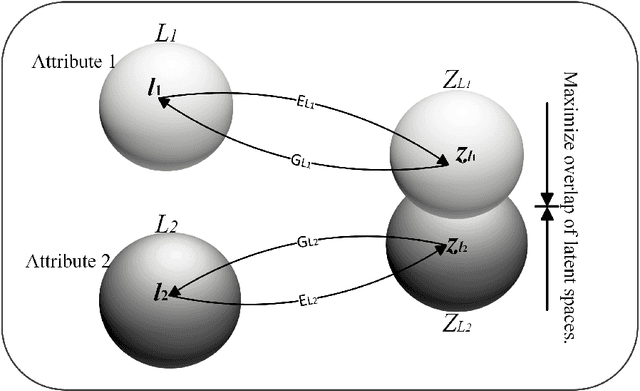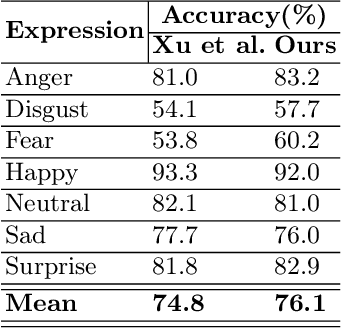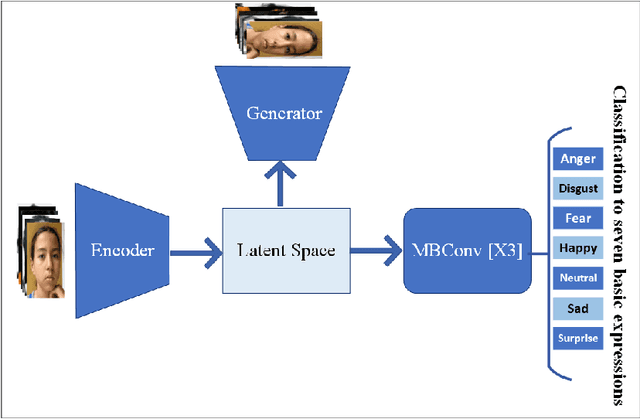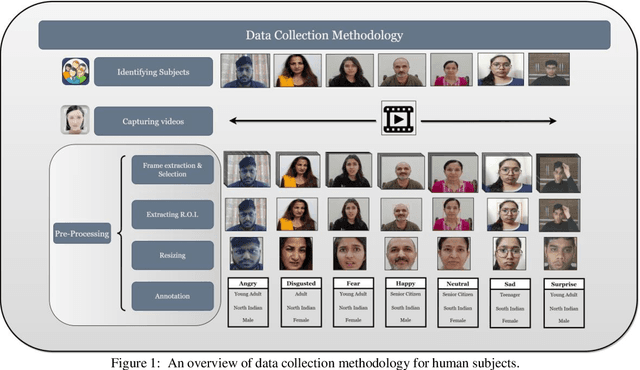Syed Sameen Ahmad Rizvi
Balancing the Scales: Enhancing Fairness in Facial Expression Recognition with Latent Alignment
Oct 25, 2024



Abstract:Automatically recognizing emotional intent using facial expression has been a thoroughly investigated topic in the realm of computer vision. Facial Expression Recognition (FER), being a supervised learning task, relies heavily on substantially large data exemplifying various socio-cultural demographic attributes. Over the past decade, several real-world in-the-wild FER datasets that have been proposed were collected through crowd-sourcing or web-scraping. However, most of these practically used datasets employ a manual annotation methodology for labeling emotional intent, which inherently propagates individual demographic biases. Moreover, these datasets also lack an equitable representation of various socio-cultural demographic groups, thereby inducing a class imbalance. Bias analysis and its mitigation have been investigated across multiple domains and problem settings, however, in the FER domain, this is a relatively lesser explored area. This work leverages representation learning based on latent spaces to mitigate bias in facial expression recognition systems, thereby enhancing a deep learning model's fairness and overall accuracy.
InFER: A Multi-Ethnic Indian Facial Expression Recognition Dataset
Sep 30, 2023



Abstract:The rapid advancement in deep learning over the past decade has transformed Facial Expression Recognition (FER) systems, as newer methods have been proposed that outperform the existing traditional handcrafted techniques. However, such a supervised learning approach requires a sufficiently large training dataset covering all the possible scenarios. And since most people exhibit facial expressions based upon their age group, gender, and ethnicity, a diverse facial expression dataset is needed. This becomes even more crucial while developing a FER system for the Indian subcontinent, which comprises of a diverse multi-ethnic population. In this work, we present InFER, a real-world multi-ethnic Indian Facial Expression Recognition dataset consisting of 10,200 images and 4,200 short videos of seven basic facial expressions. The dataset has posed expressions of 600 human subjects, and spontaneous/acted expressions of 6000 images crowd-sourced from the internet. To the best of our knowledge InFER is the first of its kind consisting of images from 600 subjects from very diverse ethnicity of the Indian Subcontinent. We also present the experimental results of baseline & deep FER methods on our dataset to substantiate its usability in real-world practical applications.
* In Proceedings of the 15th International Conference on Agents and Artificial Intelligence Volume 3: ICAART; ISBN 978-989-758-623-1; ISSN 2184-433X, SciTePress, pages 550-557. DOI: 10.5220/0011699400003393
 Add to Chrome
Add to Chrome Add to Firefox
Add to Firefox Add to Edge
Add to Edge